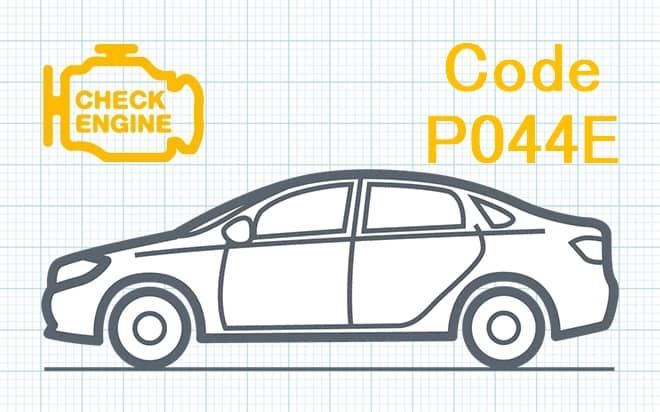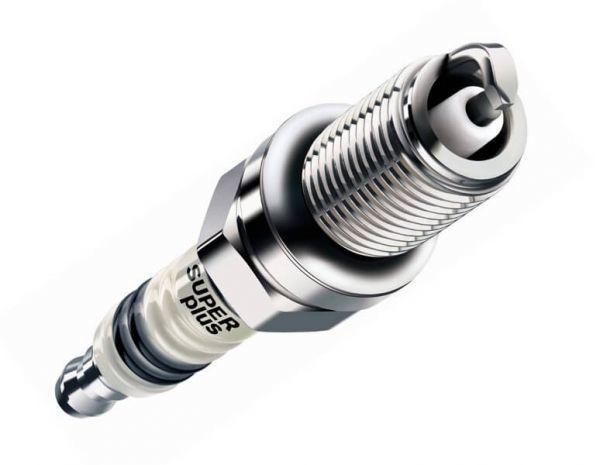
P044E Exhaust Gas Recirculation Sensor C Circuit Malfunction
Content
P044E Exhaust Gas Recirculation Sensor C Circuit Malfunction
OBD-II DTC Datasheet
Intermittent / unstable EGR sensor "C" circuit
What does this mean?
This is a Generic Transmission Diagnostic Trouble Code (DTC), which means it applies to all makes / models from 1996 onwards. However, specific troubleshooting steps may differ from vehicle to vehicle.
The P044E On-Board Diagnostic (OBD) trouble code is a generic trouble code that refers to an intermittent or intermittent problem in the Exhaust Gas Recirculation (EGR) valve "C" circuit.
The exhaust gas recirculation valve is used to supply a controlled amount of exhaust gas to the intake manifold. The goal is to keep the cylinder head temperature below 2500 degrees Fahrenheit. Oxygen nitrates (Nox) are formed when temperatures rise above 2500 degrees Fahrenheit. Nox is responsible for smog and air pollution.
The control computer, either the powertrain control module (PCM), or the electronic control module (ECM) has detected an abnormally low, high, or nonexistent signal voltage. Refer to the manufacturer's repair manual to determine which "C" sensor is installed in your specific vehicle.
How the exhaust gas recirculation works
DTC P044E refers to the same problem on all vehicles, however there are many types of EGR, sensors, and activation methods. The only similarity is that they all release exhaust gases into the intake manifold to cool the cylinder head.
Pouring exhaust gas into the engine at the wrong time lowers horsepower and causes it to idle or stall. With this in mind, computer programming only opens EGR at engine rpm above 2000 and closes under load.
Corresponding exhaust gas recirculation sensor "C" fault codes:
- P044A Exhaust Gas Recirculation Sensor C Circuit
- P044B Exhaust Gas Recirculation Sensor "C" Circuit Range / Performance
- P044C Low indicator of the sensor "C" of the exhaust gas recirculation system
- P044D A high value of the sensor "C" of the exhaust gas recirculation system
symptoms
Symptoms depend on the position of the exhaust gas recirculation needle at the time of the fault.
- Soon the service engine light will come on and the OBD code P044E will be set. Optionally, a second code may be set related to EGR sensor failure. P044C refers to a low sensor voltage and P044D refers to a high voltage situation.
- If the EGR pin is partially stuck open, the vehicle will not idle or stall.
- Knock ringing can be heard under load or at high rpm
- No symptoms
Possible reasons
- Defective exhaust gas recirculation sensor "C".
- Defective wiring harness to the sensor
- The EGR pin is stuck in the closed position and carbon build-up is preventing it from opening
- Lack of vacuum at the exhaust gas recirculation solenoid.
- Faulty exhaust gas recirculation solenoid
- Exhaust gas recirculation position sensor defective
- The differential pressure feedback sensor of the exhaust gas recirculation system is defective.
Repair procedures
All EGR valves have one thing in common - they recirculate exhaust gases from the exhaust system to the intake manifold. In addition, they differ in the methods of regulating the opening of the needle and determining its position.
The following repair procedures are the most common problems that account for most EGR failures. If the wiring harness or sensor fails, a service manual is required to determine the correct wire identification and diagnostic procedures.
Be aware that wiring varies from manufacturer to manufacturer, and computers do not respond well if the wrong wire is probed. If you examine the wrong wire and send excessive voltage across the computer's sensor input terminal, the computer will start to burn.
At the same time, if the wrong connector is disconnected, the computer may lose programming, making it impossible to start the engine until the dealer reprograms the computer.
- P044E indicates a problem on circuit B, so check the EGR sensor connector for corrosion, bent or extruded terminals, or a loose connection. Remove the rust and reinstall the connector.
- Disconnect the electrical connector and remove the exhaust gas recirculation system. Check the exhaust gas recirculation inlet and outlet for coke. If necessary, clean of coke so that the needle moves smoothly up and down.
- Check the vacuum line from the exhaust gas recirculation system to the solenoid and replace it if any defects are found.
- Check the solenoid electrical connector for corrosion or defects.
- If the vehicle is a Ford, follow the two vacuum hoses from the exhaust gas recirculation system to the differential pressure feedback exhaust gas recirculation (DPFE) sensor at the rear of the manifold.
- Check the two pressure hoses for corrosion. Experience has shown that these hoses drown out carbon deposits from the exhaust pipe. Use a small pocket screwdriver or similar to remove any corrosion from the hoses and the sensor will start working again.
If the most common tests do not solve the problem, a service manual is needed to continue checking the electrical circuits. The best solution is to take the car to a service center with the appropriate diagnostic equipment. They can quickly identify and fix this type of problem.
Related DTC discussions
- There are currently no related topics in our forums. Post a new topic on the forum now.
Need more help with code p044e?
If you still need help with DTC P044E, post a question in the comments below this article.
NOTE. This information is provided for informational purposes only. It is not intended to be used as a repair recommendation and we are not responsible for any action you take on any vehicle. All information on this site is protected by copyright.

